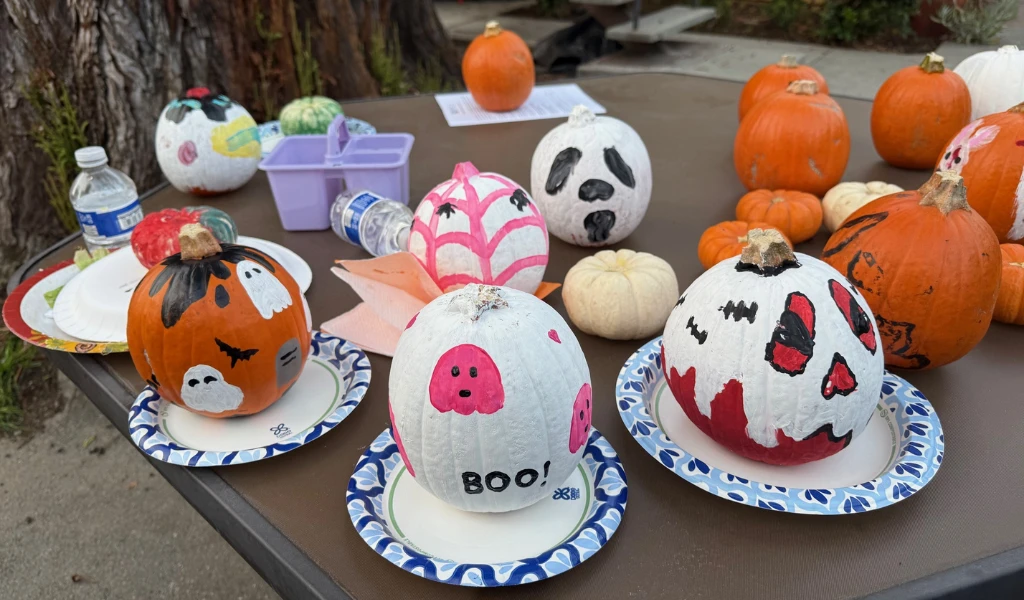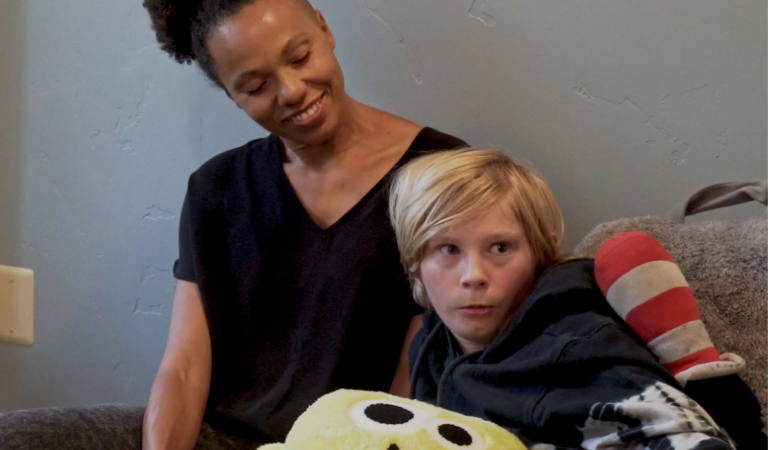Centering Youth Voices: Inside Seneca’s Youth Advisory Board

By Darius Griffin
Picture this: It’s a Wednesday, October, afternoon and you walk into the meeting room at our main office in San Jose. It’s buzzing with energy as youth from different programs gather after school to paint pumpkins, share their experiences, and brainstorm ideas for their next community event. The sound of laughter fills the air and an absurdly large stack of pizzas sits in the corner almost completely devoured. You ask yourself: “What’s going on here?” Well, it looks like you’ve just stumbled upon Seneca’s Youth Advisory Board!
Seneca’s Youth Advisory Board (YAB) is a peer mentorship/advocacy group made up of current and former clients from across Seneca programs. Established in 2019, YAB is an essential part of our ongoing commitment to elevate youth voices, provide a space for building community, and center the perspectives of those we serve. While this group is based in Santa Clara County, it’s open to youth from all Seneca regions and participants vary in age from pre-teens to young adults.
At least once a month, YAB members come together for creative, service-oriented, or leadership-focused events. This might include volunteering at a community food bank, going on a field trip to a local tech company, or even taking part in a cooking class (budget permitting). These hands-on experiences give our youth the chance to try new things while also helping them build their confidence.
“We offer opportunities to be part of positive, pro-social events, give back through volunteerism, and experience things they might not have had access to otherwise,” explains Rosario Llamas, Seneca’s YAB coordinator. “Being able to offer them a community where they’ll feel accepted is huge for their healing and overall well-being.”
Make an impact | Donate to support youth and families today
What makes YAB so special is that it truly is youth-driven. Members come together to choose monthly themes, plan events, and brainstorm ways to give back to their communities. This model keeps meetings fresh and reinforces the idea that young people have real power in shaping their own experiences. It also lets YAB members connect with one another and build a supportive community. But why is finding an accepting community so important and sometimes so difficult?
Much of the work in mental health is deeply individualized. Yes, group therapy exists, but a large portion of the healing process happens alone in private sessions. This can leave youth feeling like their challenges are something they have to manage alone or something only they are facing. It also doesn’t help that talking about mental health can still carry a stigma, especially for young people. Many worry they’ll be judged or misunderstood by peers who simply don’t understand them.
Our YAB flips that experience on its head and uses community as a form of healing. Here, youth are surrounded by peers who get it. They don’t have to explain what they’re going through or be scared of being “different.” Instead, they’re encouraged to openly share and connect with each other without judgment or shame. YAB is also one of the few programs that youth can remain part of even after their formal Seneca services end, helping them maintain lasting connections and continue building leadership skills into young adulthood.
“Our kids need community and these kiddos need to be in spaces with other youth that they feel they can relate to. So, they don’t feel like they’re the only one who has a wraparound team. Or, if they tell somebody at school that they’re in therapy, then something’s wrong with them,” explains Katherine De Guzman, Santa Clara County wraparound supervisor. “They need to be in spaces where they feel understood.”
Beyond friendships, YAB members also play a crucial role in influencing Seneca’s programs and services. Through open discussion, feedback sessions, and collaborative projects, youth help staff understand what it’s really like to be a young person receiving mental health support today — and what could make that experience even better.
Their insights inform everything, from how we design our group activities to how we approach family engagement. It’s one thing to design programs for youth, but at Seneca we believe working with youth makes our services even more effective and inclusive. Their lived experiences give us a firsthand account of what works, what needs to evolve, and how we can continue creating spaces where young people are supported.
So, did I answer your question? “Wait, is this guy some sort of mind-reader?!” Well sorry for being presumptive but, hey, at least you got your answer! This room is currently filled with pumpkins, paintbrushes, and the smell of pizza. But it’s also a community where confidence is built, stigma is challenged, and youth learn that their voices don’t just deserve to be heard, they also get to shape what happens next.
Stay tuned to see what’s next for YAB, and if you’re a local organization, business, or community member who wants to get involved, we’d love to connect! Whether it’s hosting a field trip, sponsoring an event, or sharing this blog post (thanks, by the way!), your ongoing support helps keep the YAB going strong. Please reach out to Rosario Llamas or Katherine DeGuzman to collaborate.



